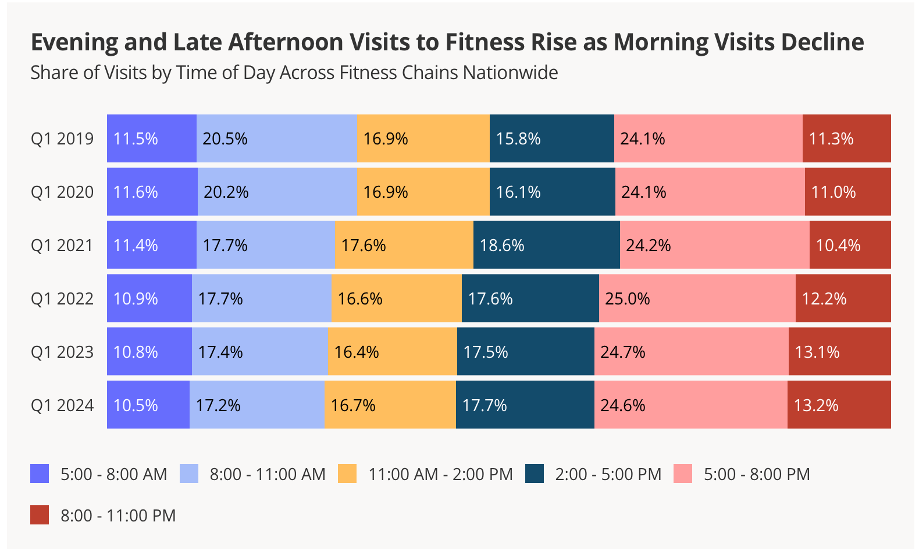Winning Strategies for a Stabilizing Fitness Market

With relentless uncertainty impacting the commercial real estate market, any sign of stability within a sector is important to identify and understand. Investors must be creative in their portfolio diversification, which is why all real estate professionals should take a closer look at the fitness industry. The fitness industry, for obvious reasons, was a post-pandemic success, as visits to gyms across the country surged once people were allowed to leave home and restart their in-person workout routines. Despite soaring inflation and reduced discretionary spending, people continued to go to the gym and pay membership costs to do so. While the fitness industry experienced consistent growth for years following the pandemic, the growth has now stabilized. Placer.ai released a whitepaper that explores the different ways in which location analytics reveal how the fitness space has changed – and what strategies gyms can adopt to stay successful.
One of the best ways for fitness centers to continue growing and/or maintain stability is to lean into consumer preferences. For example, Placer.ai reports that gym visits increased by 15.8%-18.6% during the time slots of 2:00 PM-5:00 PM during the pandemic years of 2019-2021 due to remote work. Though this trend partially reversed as the pandemic receded, afternoon visits remained elevated in Q1 2024 compared to pre-COVID levels – likely a reflection of hybrid work patterns that leave people free to take an exercise break during their workdays. At the same time, the share of morning visits to fitness chains (between 8:00 AM and 11:00 AM) dropped from 20.5% in Q1 2019 to 17.2% in Q1 2024, while evening visits (between 8:00 PM and 11:00 PM) increased from 11.3% to 13.2%.
Gyms that recognize this changing behavior can adapt to new workout preferences – whether by incentivizing morning visits, scheduling popular classes mid-afternoon, or offering extended evening hours.

Additionally, Placer.ai’s data indicates that gyms leaning into the evening workout trend are already finding success. Of the top 12 most-visited gym chains in the country, those that saw bigger increases in their shares of evening visits also tended to see greater year-over-year (YoY) visit growth.
For example, EōS Fitness and Crunch Fitness have seen their shares of evening visits grow by 5.5% and 3.4%, respectively, since COVID – and in Q1 2024, their YoY visits grew by 29.0% and 21.8%. Other chains, including 24 Hour Fitness and Chuze Fitness, experienced similar shifts in visit patterns. At the same time, LA Fitness saw just a minor increase in its share of evening visits between Q1 2019 and Q1 2024, with a correspondingly small increase in YoY visits. As the evening workout slot gains popularity, gym operators that can adapt to these new trends and encourage evening visits may see significant benefits in the years to come.
The fitness industry presents a compelling investment opportunity for real estate investors due to its demonstrated resilience and adaptability in the face of economic fluctuations and changing consumer behaviors. The post-pandemic surge in gym visits, especially during non-traditional hours, highlights a robust and sustained demand for fitness facilities. By leveraging data-driven insights, such as those provided by Placer.ai, investors can identify trends and strategically position their properties to cater to evolving preferences. Therefore, incorporating fitness centers into a diversified real estate portfolio can offer a reliable and lucrative investment pathway.
A Trusted Guide in Commercial Real Estate
Coldwell Banker Commercial® provides Commercial Real Estate Services from Property Sales and Leases, to Property Management. Learn how our expansive network of Independently Owned and Operated Affiliates and Real Estate Professionals use their in-depth knowledge of the local market and industry trends to help businesses and investors navigate the complexities of the commercial real estate landscape.






